Getting in touch with others after a large scale crisis is impossible through normal channels. The internet is down, the power grid doesn’t work, and everyone is afraid. It does not matter if we talk about an earthquake, large scale EMP attack, or a hurricane.
Are your friends safe?
Is your family safe?
These are the natural questions to have!
Communication when the SHTF is a vital part of being a prepper. You have to know how to get in touch with those you care about and how to learn news about what is going on in your area.
Our ancestors used smoke signals to spread the news. We now use the internet and social media. Unfortunately, taking away the internet, social media, and cell phones is just like taking away our ancestors’ smoke signals.
What do you do?
Preppers know the answer: HAM radios. But having a random ham radio is not enough. You need to have a good, reliable one, know how to use it, and what frequencies to check to get in touch with others or get news. Some also need to learn how to use the radios.
We will talk about all these important things below but first, let’s talk about the basics real quick for those who do not know much about ham radios.
What Is Ham Radio?
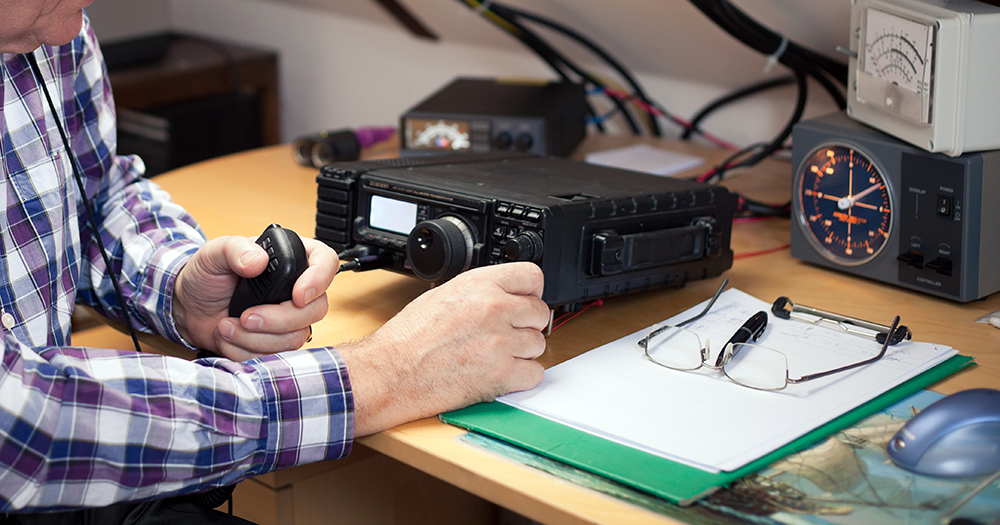
If we were to define it, a HAM radio (also known as amateur radio) is a two-way radio service where licensed operators around the world experiment and communicate with each other on special frequencies reserved for license holders.
To simplify, it’s when you use HAM radios to communicate on a smaller scale, often in situations where other communication methods aren’t available.
While you are not allowed to use frequencies legally owned by others, during a disaster, communication is the priority. If you’re injured and need help, no one will care that you’re using someone else’s frequency. Additionally, there are certain frequencies where preppers communicate even without a disaster occurring.
Frequencies are like invisible lanes in the air that carry signals, such as sound, data, or messages, through radio waves. Each “lane” (frequency) has a number measured in hertz (Hz), which indicates how fast the wave vibrates.
HAM radios use a wide range of these frequencies to send and receive voice or data messages, especially when regular communication methods like phones or the internet are unavailable. These frequencies are specifically set aside for amateur radio use and are regulated by governments.
A description of the frequencies HAM radios use:
-
LF (Low Frequency): Ideal for experimental long-range communication, like over land or water (30–300 kHz).
-
MF (Medium Frequency): For regional communication (300 kHz – 3 MHz).
-
HF (High Frequency): Best for long-distance communication (3–30 MHz).
-
VHF (Very High Frequency): Great for local communication, such as with handheld radios (30–300 MHz).
-
UHF (Ultra High Frequency): Best for short-range, urban communication (300 MHz–3 GHz).
To put it simply, the higher the frequency, the shorter the range, and the less impact obstacles like buildings will have on the transmission. VHF/UHF channels are perfect for line-of-sight, battery-powered communication, especially when roads are compromised. HF channels and international frequencies can provide coordination over hundreds of miles.
What do you need to communicate in a crisis using these frequencies?
-
HAM Radio: A VHF/UHF band radio is perfect for local communication, while an HF (high frequency) radio is ideal for global communication.
-
Power Supply: Depending on the type of HAM radio you use, you’ll need either a regular power supply (from a generator) or batteries.
-
Antennas: Every radio requires an antenna. While choosing one can be complex, the good news is that when you buy a HAM radio setup, you typically also receive the correct antenna.
Main HAM Radio Frequencies Preppers Should Know
We will share a list of the most commonly used HAM radio frequencies favored by survivalists and preppers in the U.S. If you would like to share others with readers, please feel free to do this in the comments section.
✅ VHF Frequencies (30 MHz – 300 MHz)
The 2-meter amateur band is between 144–148 MHz in the U.S.
-
146.420 MHz FM – A popular prepper/simplex frequency for local group coordination on the 2-meter band.
-
146.520 MHz FM – ✅ National 2-meter simplex calling frequency. Used to make contact, then move to a different channel.
-
146.550 MHz FM – Often used by survivalist/prepper groups for alternate local communications on 2 meters.
✅ UHF Frequencies (300 MHz – 3 GHz)
The 70 cm amateur band is 420–450 MHz.
-
446.030 MHz FM – Common UHF simplex prepper frequency (“HAM U3”), good for short-range/urban comms.
-
446.000 MHz FM – ✅ National 70 cm simplex calling frequency in the U.S. for making initial contact.
✅ HF SSB (Single SideBand) Frequencies (3–30 MHz)
These frequencies are used for long-distance or regional voice communications using USB or LSB depending on band.
-
28.305 MHz USB (10 m) – SSB survivalist “HAM10M” frequency for daytime DX when propagation is good; supports long-range contacts during high MUF conditions but not NVIS.
-
14.242 MHz USB (20 m) – TAPRN and other prepper nets use this for long-distance daytime communication.
-
7.242 MHz LSB (40 m) – TAPRN nighttime net frequency; excellent for ~300 mile coverage after dark.
-
5.357 MHz USB (60 m, Channel 3) – One of the 5 U.S.-authorized 60-meter channels; used for NVIS and emergency comms (~500 miles).
-
3.818 MHz LSB (80 m) – TAPRN and similar groups use this for regional/nighttime NVIS and local coverage.
✅ Other Noteworthy Frequencies
-
27.065 MHz (CB Channel 9) – Emergency channel on the CB band. Monitored less than it used to be but still recognized.
-
27.185 MHz (CB Channel 19) – Most active CB channel, especially near highways.
-
162.400 – 162.550 MHz – ✅ NOAA Weather Radio broadcast frequencies.
-
121.500 MHz AM – ✅ Aviation Emergency & Distress frequency (VHF).
-
243.000 MHz AM – ✅ Military/Air Force Search and Rescue (UHF).
-
155.160 MHz FM – Common frequency for Land Search and Rescue operations (varies by agency/region).
🚨 Summary of Critical Survival/Prepper Frequencies:
| Purpose | Frequency (MHz) | Notes |
|---|---|---|
| 2m National Calling | 146.520 | FM, simplex, VHF |
| 70cm National Calling | 446.000 | FM, simplex, UHF |
| CB Emergency (Ch. 9) | 27.065 | AM, monitored less today |
| CB Highway/Travel (Ch. 19) | 27.185 | AM, truckers & general travel info |
| NOAA Weather | 162.400–162.550 | FM, receive only |
| Aviation Emergency | 121.500 | AM, worldwide standard |
| Military Emergency | 243.000 | AM, UHF military use |
| TAPRN Daytime (20m) | 14.242 | USB, HF |
| TAPRN Night (40m) | 7.242 | LSB, HF |
| TAPRN Regional (80m) | 3.818 | LSB, HF |
| Authorized Emergency (60m) | 5.357 | USB, one of 5 official 60m channels |
How To Choose A Prepper Ham Radio
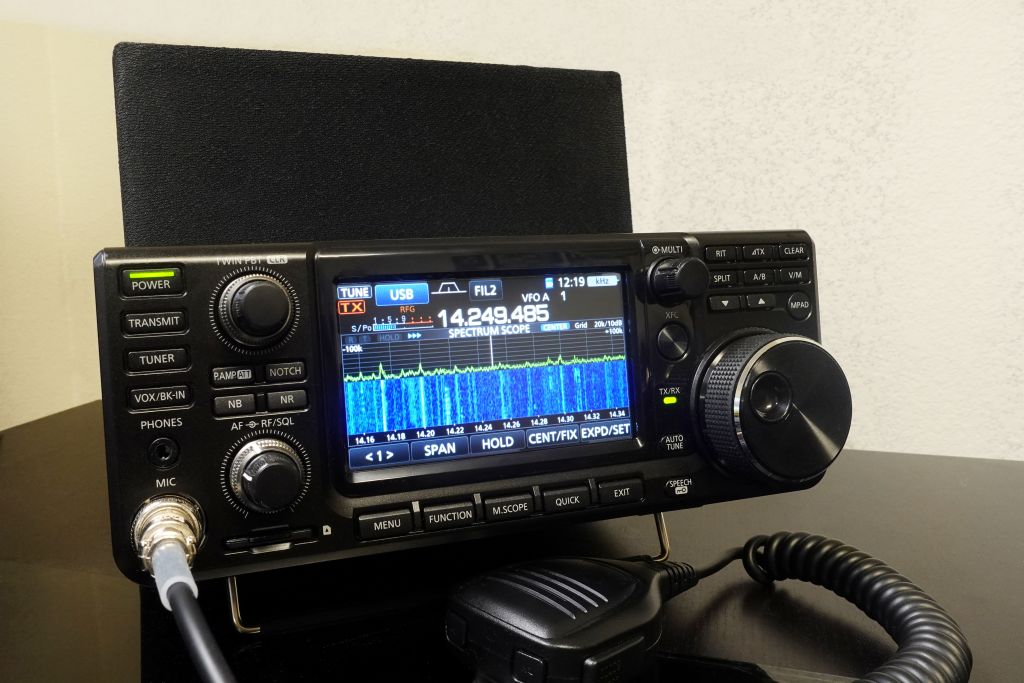 In this article, we do not talk about the hobby, we will focus on exactly what you need as a prepper. We talk about using HAM radios as a communication method after a disaster. This means we cannot just buy the first unit we find.
In this article, we do not talk about the hobby, we will focus on exactly what you need as a prepper. We talk about using HAM radios as a communication method after a disaster. This means we cannot just buy the first unit we find.
The best Ham Radios for preppers need to be:
- Portable – The walkie-talkie is the best example of a highly portable two-way radio. You need the HAM radio to be portable and small enough so you can use it in any possible scenario.
- User-Friendly – You do not need complex features, just the basics.
- Rugged – You might have to use the HAM radio in austere environments, like during disaster relief. Obviously, you do not want it to break if you drop it by mistake.
- Capable of receiving Emergency Alerts – NOAA weather radio broadcasts accurate information that can help you prepare for incoming weather emergencies. Many handheld HAM radios can receive NOAA weather frequencies (162.400–162.550 MHz). Some models also include a weather alert function that automatically notifies you of warnings. Note: EAS alerts are typically broadcast over AM/FM or NOAA weather radios, not HAM radios directly.
- Capable of receiving aviation, marine, and first responder frequencies – Your HAM radio should be able (with minimal programming) to receive signals from aviation, marine, and public safety bands. However, it is illegal to transmit on these frequencies unless it’s a true emergency involving immediate threat to life. Listening is allowed, but you must never interfere with these services.
- Two-Way – As a prepper, only a two-way HAM radio should be considered. CB, GMRS, FRS, MURS, and marine VHF radios also offer two-way communication, but with limited range and features. HAM radios offer more power, better antenna options, and access to repeaters—making them far more effective in emergencies.
- Able to transmit at a radius of several miles – In survival or tactical scenarios, the most useful frequencies travel via line of sight. In typical conditions, non-licensed radios (like FRS or CB) are limited to around 1–2 miles. But with a quality HAM handheld and a good antenna, even basic models can often communicate 3–5 miles, and much further when using a repeater or operating from elevation.
Recommended HAM Radios To Buy
The best HAM radio for you is the one that perfectly fits your needs. We cannot guarantee that these are the ones but they are definitely top choices for their intended uses:
Best Overall HAM Radio – Baofeng UV-5R
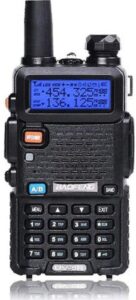 The Baofeng UV-5R offers huge value for the price tag, just $16.47. It is arguably the most popular budget-friendly dual-band handheld radio among preppers. It gives you reliable, versatile communication capability on both VHF (136-174 MHz) and UHF (400-480 MHz) amateur bands in a single compact unit. Its small size, long battery life, and programmable memory channels make it ideal for building a discreet, mobile emergency communications kit, and its low price point means you can equip multiple family members without breaking the bank.
The Baofeng UV-5R offers huge value for the price tag, just $16.47. It is arguably the most popular budget-friendly dual-band handheld radio among preppers. It gives you reliable, versatile communication capability on both VHF (136-174 MHz) and UHF (400-480 MHz) amateur bands in a single compact unit. Its small size, long battery life, and programmable memory channels make it ideal for building a discreet, mobile emergency communications kit, and its low price point means you can equip multiple family members without breaking the bank.
Key Advantages for Preppers
- Dual-Band Flexibility
- Long Battery Life & Swappable Packs
- Extensive Programmability
- Compact, Rugged Design
- Many available accessories
- Budget-Friendly & Multiples-Friendly
Taken together, these features make the Baofeng UV-5R an ideal choice for preppers looking to establish dependable, long-range and local communication networks, without the high price tag of commercial-grade gear.
Best Beginner HAM Radio – Retevis RT95 Mobile HAM Radio
 The Retevis RT95 is a compact, dual-band mobile HAM radio that offers a robust set of features ideal for preppers and survivalists seeking reliable communication in both urban and remote settings. With its VHF (144-148 MHz) and UHF (430-440 MHz) capabilities, this transceiver ensures versatile connectivity across various scenarios.
The Retevis RT95 is a compact, dual-band mobile HAM radio that offers a robust set of features ideal for preppers and survivalists seeking reliable communication in both urban and remote settings. With its VHF (144-148 MHz) and UHF (430-440 MHz) capabilities, this transceiver ensures versatile connectivity across various scenarios.
Key Advantages for Preppers:
- Dual-Band Flexibility
- Adjustable Power Output
- Compact and Durable Design
- User-Friendly Interface
- Enhanced Audio Clarity
- Comprehensive Programming Options
- Extensive Channel Capacity
- Advanced Features
For preppers aiming to establish a reliable communication network, the Retevis RT95 offers a balance of functionality, durability, and affordability, making it a valuable addition to any emergency preparedness kit.
Best Upgrade HAM Radio – Yaesu Original FT-65
 The Yaesu FT-65R is a compact, rugged, dual-band handheld transceiver that offers a reliable communication solution for preppers and survivalists. Designed for both VHF (144-148 MHz) and UHF (430-450 MHz) frequencies, it ensures versatile connectivity in various environments.
The Yaesu FT-65R is a compact, rugged, dual-band handheld transceiver that offers a reliable communication solution for preppers and survivalists. Designed for both VHF (144-148 MHz) and UHF (430-450 MHz) frequencies, it ensures versatile connectivity in various environments.
Key Advantages for Preppers:
- Dual-Band Flexibility
- Adjustable Power Output
- Rugged and Durable
- Long Battery Life
- Clear Audio Output
- NOAA Weather Alerts
- User-Friendly Interface
- Versatile Scanning Capabilities
- Several Additional Features
The Yaesu FT-65R offers a balance of performance, durability, and essential features to stay connected during emergencies.
Take It One Step Further
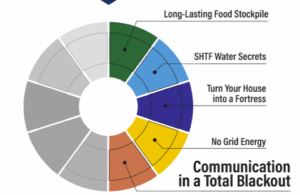 Obviously, we only highlighted the basics above. There is so much more to know about communicating when SHTF and practically during any major crisis. If you want to learn more, you should seriously consider checking out the “Post-SHTF Communication Blueprint” in Joel Lambert’s “A Navy Seal’s Bug-In Guide“.
Obviously, we only highlighted the basics above. There is so much more to know about communicating when SHTF and practically during any major crisis. If you want to learn more, you should seriously consider checking out the “Post-SHTF Communication Blueprint” in Joel Lambert’s “A Navy Seal’s Bug-In Guide“.
It teaches you everything you need to know about communicating in a blackout or after an electromagnetic pulse that takes down our cell towers and satellites. All the tactics you learn are the exact ones SEALs use, including:
- How to operate the best HAM radios for preppers
- How to build a homemade antenna that can greatly amplify any radio signal
- How to listen in without being detected
- The cheapest way to buy emergency radios in America
- How to use a car battery to power up your radios
- And much more
This is just ONE chapter from the bug-in guide. You also get 9 others that specifically tailored for preppers interested in bugging in and surviving whatever life throws at them. For only $37, this book is a steal and every prepper should have it.
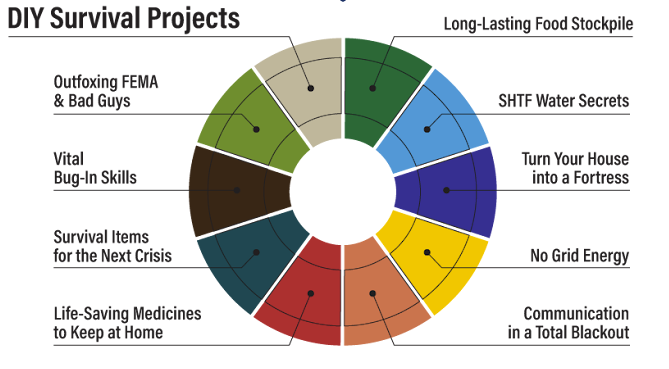
You can learn more about what is included in the guide here!
Final Thoughts
In a true crisis, when cell towers are silent and the internet goes dark, HAM radio becomes more than just a backup. It becomes a lifeline! Knowing the right frequencies, having the right gear, and understanding how to use it can mean the difference between being informed or being in the dark, between reaching loved ones or being completely cut off.
If you’re serious about preparedness, don’t ignore communication. Learn the frequencies. Practice using them. Equip yourself and your group with radios that fit your needs and environment. Because when the SHTF, information is power. And silence can be deadly.
Stay ready. Stay connected. And never underestimate the power of a well-tuned radio!
You May Also Like
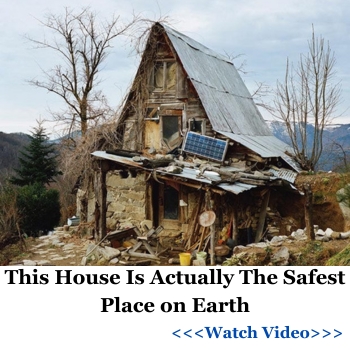 Ham Radio Mistakes You Need to Avoid at All Costs
Ham Radio Mistakes You Need to Avoid at All Costs
Signs Your Neighbor Will Become a Looter as Soon as SHTF (video)
How To Get A Ham Radio License For When SHTF
How To Turn Your CB Car Radio Into A Powerful Transmitter
Quick and Easy Cheat Sheet to Learn How to Operate a Ham Radio

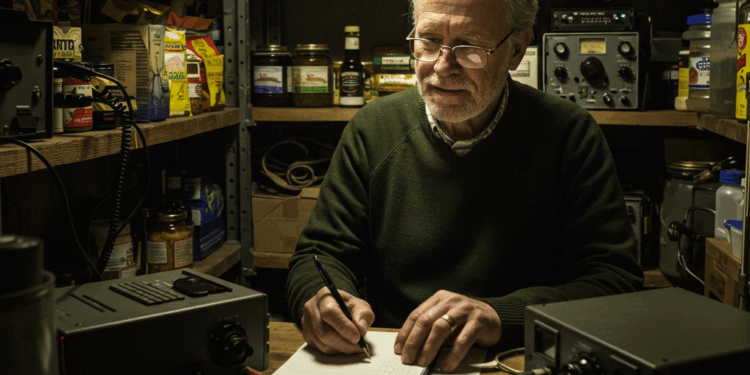







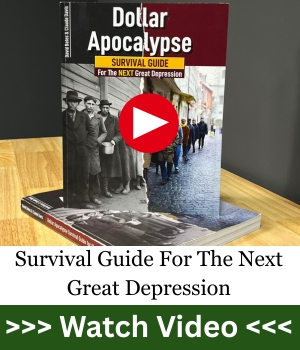



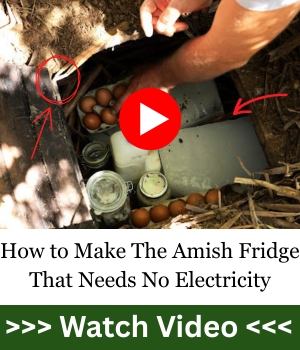

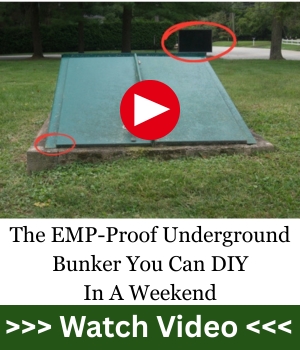






Good. We have needed a decent article on ham radios, and you have delivered. I don’t know about the frequencies being “secret” anymore, since they are now here for everyone to see lol.
I have listened to a few podcasts regarding ham radio. One was terrible – just a guy and his wife going on and on about how if unlicensed people transmit that they will track you down and get you in trouble. Whatever. Licenses will go out the door when SHTF. You won’t get any people interested in ham radio with threats, and that type of elitist behavior doesn’t reflect the ham community at large.
The best thing is going to be IMHO that we get some ham equipment and start working on being licensed BEFORE SHTF. It’s on my list of things to do, when I get a roundtuit!
Go ahead. Getting the license is not that difficult. The frequencies are still kind of secret since only we actually look for them and use them, most people not caring much about them. And yes, when SHTF, nobody will care about the licenses. In serious emergencies too, the authorities do not care that you use them as long as you have very good intentions, like saving a life.
Article is misleading. There is no NVIS on ten meters.
You are absolutely correct, there is no NVIS on 10m. We corrected the error in the article and apologize for making it. Thank you for letting us know.
Getting licensed before SHTF is a very wise choice, mainly because you learn about how to operate a radio and build a station, including antennas, and operate a radio. UHF and VHF are pretty straight forward and attainable, BUT their range is very limited, only 5-10 miles simplex, or to a repeater, which gives you maybe 50 miles, depending on the repeater network you hit. HF(shortwave) takes more to learn and operate. The range can be thousands of miles. BUT if you don’t know what you’re doing, you can destroy your radio, and then you’re really screwed. So get that damned roundtoit, and get crackin’!!!!!!
Great Article
But What About the antennas ?
do you need the Monster Antenna to recieve the HF, UhF Vhf signals and who uses them
I have Scanners, and Cbs and Crystals for in town applications
but what about the others ?
I think at this pt , it is more important to get the Cell Frequencys and Jamming equip
so you can disrupt the controls
The size and type of antenna you need really depends on the frequencies you’re using and your available space. For HF bands, antennas can often be longer, but wire dipoles or magnetic loop antennas can still offer good performance even in limited spaces. VHF and UHF antennas are usually more compact and can be quite effective with handheld radios or mobile units. You definitely don’t need a “monster antenna” to receive these signals, but the better the antenna, the better your reception and transmission quality.
As for cell frequencies and jamming equipment, it’s important to note that jamming signals or interfering with licensed communications, like cell networks, is illegal in most places. While it’s true that knowing your local frequencies can be useful, especially for scanning and monitoring, it’s always best to focus on legal and ethical uses of HAM radio. These frequencies are used for emergency communications. When something serious happens, sure, you can use them. but, right now, please be careful with the legality of things. You do not want them to arrest you because you use jamming equipment!!!
and what about the Icom 7300 – the best radio on the market???
Absolutely top choice but we have to think about most people and the hard truth is most will not be able to afford the price.
Different frequencies require different antennas. A good UHF/VHF antenna is only about 2 feet long, and many come with magnets to mount to the top of a vehicle. HF requires the big antennas that you either mount to a building, middle of the yard, or a field, or even use a tree to set up by throwing a rock tied to a string up over a high branch to pull the antenna wire up as high as you can go (long story but, that’s the cliffs notes version…) Different licenses allow different frequencies to be used legally as well, a technician license allows 2 meter and 10 meter bands, general license allows the HF bands, and Advanced license allows others. But as others have said “emergency situations” permit anyone to use anything available to save lives and property. If the fit hits the Shan, there won’t be any regulatory agencies to worry about anymore. So you do what you have to do at that point.
This listed frequencies are nonsensical.
You are absolutely right. The listed frequencies were wrong. They were from a work-in-progress version that for some reason remained saved in the backend. The actual frequencies were added now.
As a ham radio operators for over 50 years and have taught many classes for the testing . I am sorry to say this is the worst article I have seen on this site. I hate to throw rocks . As an example none of the frequencies listed are accurate.
Let us learn from your experience, Please rewrite this article into something useful.
You are absolutely right. The listed frequencies were wrong. They were from a work-in-progress version that for some reason remained saved in the CMS. The actual frequencies were added now.
So… how is the article now that the frequencies are allegedly correct? I wouldn’t know if they were messed up or OK.
I have no ham license and no radio equipment but a couple of CB radios. I can LISTEN to people with what I assume are big radios with big linear amplifiers and big antennae – from all over the US. I don’t understand it.
I mean, I do well to get 15-20 miles transmitting. My SWR on the Uniden is 1.0 and running a Wilson 5000 mag-mount. Peaked and tuned with “Galaxy finals” and a noise-cancelling microphone. I don’t see how people are talking coast-to-coast with a CB.
Great question, and we understand your confusion, let’s break it down a bit.
The key difference between CB radios and HAM radios is in the equipment and the frequencies they use. CB radios operate on the 11-meter band, which is limited to a certain power output (usually around 4 watts) and a range of up to 15-20 miles, depending on conditions, antenna, and terrain. You’re right! CBs typically don’t allow for the kind of long-range, coast-to-coast communication that HAM radios can achieve.
HAM radios, on the other hand, can operate on a wider range of frequencies (HF, VHF, UHF, etc.), and these higher bands allow for communication over long distances,especially on HF bands like 20 meters or 40 meters, where signals can bounce off the ionosphere and travel hundreds or even thousands of miles.
When you hear people talking coast-to-coast, they’re likely using HF HAM radios, which don’t have the same power limitations as CBs and can rely on propagation (using the atmosphere to extend range). It’s also common for HAM operators to use high-gain antennas and additional equipment like linear amplifiers to boost their signal for even better range.
The Wilson 5000 mag-mount is a great antenna for a CB, but when it comes to long-distance communication like coast-to-coast, you’ll usually need HAM radio gear and the proper licenses to use the associated frequencies legally.
If you’re curious about exploring HAM radio, the first step would be to look into getting your amateur radio license. There are different license levels, but they all open up the ability to communicate on a much broader range of frequencies with more power, which is what makes those long-distance conversations possible. And it is always better to have the knowledge from such a course when SHTF.
Hope this clears things up! Let us know if you have more questions. We will do our best to answer!
CB (11 meter Band) does occasionally get band openings that truckers have been able to talk for a hundred to a thousand miles for short periods of time. This is called a band opening. When the band opens your signal will travel much farther. We are currently near the top of the solar cycle, so band openings are happening more frequently. Get your license and learn about propagation. It isn’t rocket science.
Someone needs to edit the frequency list. It is all mixed up.
There was an error you are correct. It was solved.
Use this link for correct frequencies: “https://radiofreeq.wordpress.com/2013/06/29/shtf-survivalist-radio-frequency-list/”
:
Those are old. We updated with the ones that work now.
Antennas can be easily made with wire. I have talked from VA to Chile on 10m with a wire dipole antenna in the attic. Amazing.
As for the frequencies listed – the author only used the last few digits on the frequency. For example: 2 meter/VHF – 146.520 is a generally used frequency for simplex calling. (similar to CB19). A scanner will also pick up the VHF/UHF freqs so one can listen to local hams and get a sense of what is going on. In our rural area, we have yet to have EMS/cops go to digital freqs so I am able to listen in on my ham radio as well. Fascinating hobby. Look for a local club in your area. Lower cost used equipment can be found as well.
Antennas can be easily made with wire, and many operators have had great success with simple DIY setups like a dipole antenna. It’s truly amazing what can be achieved with basic gear. The fact that you were able to talk from VA to Chile on a 10m wire dipole in your attic is an excellent example of how HF bands can provide long-distance communication with minimal equipment.
Regarding the frequencies, I see your point about using the last few digits of the frequency and we did have an error in the initial version published, as the frequencies were all messed up. We are sorry for that, once again. For example, the 146.520 MHz frequency you mentioned is indeed a VHF simplex calling frequency, which is commonly used by HAM operators for local communications, much like how CB 19 is used for local CB chatter. But we did not list that correct and spotted it right. We corrected after.
You’re also correct that scanners can pick up both VHF/UHF frequencies to monitor local activities, including conversations from nearby HAM operators. It’s a great way to learn more about what’s happening in your area.
As for getting started in HAM radio, joining a local club is definitely a great suggestion. Clubs can provide valuable support, and you can often find used equipment at lower costs, a rather unknown and untalked about advantage, perfect for newcomers who are just starting out. HAM radio is an incredible hobby Keep enjoying it God Bless!
Y’all are assuming you or the receiver will have power.
My Sony or Techsun multi band receiver runs off a solar panel the size of a regular book.
Has anyone here thought of/remembered/used/considered CW??? Needless to say, it
has many advantages: low power consumption, high efficiency, will get through when
many other modes won’t, and many other advantages. The downside if you actually can
think of it as such: you must become proficient at learning a very simple language
Morse code).
CW or Morse code is indeed a highly effective mode of communication, especially in emergency situations or when conditions are poor. As you mentioned, it requires very low power and can travel long distances even when other modes might fail, making it an essential skill for many ham radio operators. The downside is the learning curve, but once you get the hang of it, Morse code becomes an incredibly valuable tool for reliable communication, especially in survival scenarios where every watt counts. It’s definitely worth considering. Unfortunately, we only have this article on Morse code: https://www.askaprepper.com/10-ways-signal-sos/
And you are right, we should highlight more about Morse code in general. Our team will look into it and will cover Morse code as soon as possible.
Has anyone here considered the most efficient/simple/reliable method of communication of all: CW. ??
You bring up a great point with CW, it’s simple, reliable, and doesn’t require a lot of bandwidth, making it a strong contender for emergency communication. However, the downside is that it can be a bit tricky to master, especially for beginners. While it’s very efficient in terms of power usage and distance, the speed of communication can be slow compared to modern digital modes, and it requires a certain level of proficiency in Morse code to interpret messages quickly. So, while CW is undoubtedly a valuable tool, it’s not always the most accessible option for everyone, especially under stressful conditions. But if you’ve got the skills, it can be a game-changer!
Great article except for one detail. Ham Radio for local, two way communications in emergencies are great. But, in a hostile grid down EMP kind of event, one would be better off just listening. Why would you want to take the chance of giving away your location, or prepper status, to bad people, or foreign invaders? You have nothing to gain by transmitting anything about you. Even if you need help, there would not be any emergency services available. But, you can learn a lot by just listening to what’s going on in the world, our country, and more locally. The HF bands would be your best choice for that, and no license to even think about.
For your immediate group, buy some FRS or GMRS handheld walkie talkies that have a limited range, probably within walking distance of a few miles. Then they would only be used in an emergency. And they are cheap. 3 years ago, I bought a pack of 4 from Amazon for $85 that appear to be good units for what they are supposed to do.
Also, CW on Ham Radio would have the advantage of being like a foreign language to most people, giving you secure communications,
If you have to key up. the rule of thumb has been never transmit less than 1 km from you home location. Keep the message short (encrypted, burst transmission, or otherwise) and be prepared to move immediately after transmission
Thanks … I know it could serve us well!
I have to cancel my subscription to this blog, I cannot read any of the articles because the advertising covers 1/3-1/4 of each one, to frustrating for me to both with.
There are literally 3 paragraphs out of an entire article talking about a book. And 2 images close to the end. What are you even talking about?
We understand and we respect your choices. Unfortunately, running costs are higher than most people think and we do not ask for donations or anything like that. We just try to recommend products that are highly valuable for our visitors.
I’m sticking with my transistor radio….luckily i had to work when smokey and the bandit were on T.V. Interesting article though….
In the first Rambo movie…weren’t they able to triangulate on John’s location ? Bye a big lazer and learn m. code….—–and sign….yoga…mind reading ….remote viewing….connect with the Quantum faster than light Beings on the other galaxy….—–…leave Elon alone….he’s just trying to save humanity…..☮
Haha, love the Rambo reference! Triangulation is definitely real, and it’s a big reason why some preppers still value analog comms and staying mobile. As for connecting with the quantum beings, we’ll stick to tuning in to the right frequencies for now, but hey, never hurts to keep an open mind! And yeah, Elon’s got enough on his plate already 😄 Stay safe and keep prepping!
Ya….If you tune into the wrong frequencies …you could wake up to some serious anal probing in the middle of the night….Naa…The Quantum beings are pretty nice…It’s our guys you need to watch out for….The very deep…deep….deep…state ..Actually the Quantum beings are also concerned with nuclear bomb’s…..So I hear…..You have to see it…To believe it…..I bet there’s a few stories that could be told on this web site .I looked up analog….staying on subject…
Lots of advertisements, lots of repeated information from other articles and pushing books to buy, but — there is still a lot of information to gleam from this. Cancel if you must, but this and the other articles have good information.
Thank you for your honest and balanced take—it’s really appreciated! It’s true that some content can be a bit repetitive or promotional at times, but it’s great to hear you still found valuable info to take away. It’s that kind of thoughtful feedback that helps keep the conversation going and encourages others to keep digging for the knowledge that really matters.
Regardless of the accuracy of the article radio ham/gmrs/cb is a useful tool. For effective disaster comms there are no lone wolves. Join/make a group set your frequencies from there. In a truly catastrophic disaster or shtf type of issue, I doubt the FCC will come after you or there will even be a FCC to worry about. Please do not interfere with emergency services. Each county should have an Emergency Operations Center. As part of their documentation there should be an emergency communication plan. If you don’t see ask where it is. The plan will allow you to 1) not interfere with emergency services using these ham bands. 2) will allow you to know how call for help. FCC rules allow unlicensed individuals to use FCC controlled frequencies in a life threatning emergency. I personally have one rule if you have a tool, if that tool works, use it. For radio communication it is always easier to ask for forgiveness than permission especially in an emergeny. One more thing and I will leave you. If power is an issue and recharging the radio is difficult, us “The Wilderness Protocol” You can find it on the internet. It is a method to extend the usefulness of your radio.